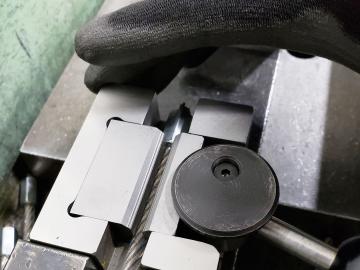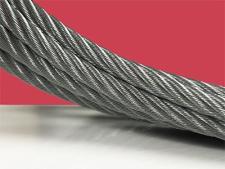Two of the most commonly used materials to manufacture mechanical cable and cable assemblies are stainless steel or tungsten. Each material has its own characteristics, such as tensile strength, heat tolerance and flexibility. But where they can masquerade as sometimes interchangeable is when they undergo life cycle testing. And it is because of their characteristic similarities under such testing, that Sava’s mechanical engineers must account for application nuances that, only in considering them, may reveal dramatic differences in these two go-to cable materials.
What is Cable Lifecycle Testing?
Cable lifecycle testing is a broad, overarching series of tests that can be used to gain a metric on how a cable will survive in its specific scenario. While lifecycle is, by its definition, broadly studying the lifespan of mechanical cable, the engineer’s goal is to identify both potential superiorities among cable materials options and uncover possible points of failure that, without such testing, may go entirely unnoticed. In short, dimensions and tolerances, although important, may not tell the whole story of how a cable will react in its chosen environment.
Why is it Important to Know the Life Cycle of Cable?
As discussed, lifecycle testing is not a binary operation, as many theories are evaluated while testing is undertaken. There is no universally embraced unit or metric involved when testing a cable's performance under stress. Lifecycle testing is only useful in relation to the specific use case being validated. For example, consider the design engineer is unsure whether stainless steel or tungsten will be the best performer for the application. In this case, testing a stainless steel cable assembly, let’s say over a pulley, will only yield meaningful results if a tungsten assembly is also tested using the exact same criteria. Taken in a vacuum, without the benefit of lifecycle testing, design engineers could falsely presume one material is superior to another.
If Sava’s lifecycle engineers uncover data revealing a clear winner in the area of durability, they will have determined that by giving each material an equal opportunity to shine. Therefore, using lifecycle testing to determine which is the better cable material, is about the material in the application, not the material itself.
Uncovering Savings in Lifecycle Testing
Even though the validity of a lifecycle test is relative to its application demands, it is critical for the mechanical engineer to identify winners when they are also measured not by tolerance or tensile strength, but rather by cost-effectiveness.
What happens when two mechanical cable materials both meet the requirements of the motion systems in which they will be deployed? Engineers don’t just test the strength or heat tolerance of a mechanical cable assembly. They also weigh the monetary options versus the mechanical benefits of the cable itself. Take, for instance, a use case where there is a negligible difference present. In this scenario, both tungsten and its stainless steel counterpart surpassed the performance needs of the assembly’s designers. Which cable material then does the mechanical engineer propose to the customer?
This is not at all an uncommon outcome of responsible lifecycle testing.
When mechanical performances are comparable, the price may play a large factor in the final decision. In the case of 304 stainless steel cable, for instance, cost-savings will be realized as compared with purchasing the same cable in tungsten, which is dramatically more expensive.
Unique Properties of Tungsten and Stainless Steel
The goal of life cycle testing is to determine whether the cable’s characteristics, in the aggregate, are the ones best-suited to fulfill the designer’s application.
Tungsten cable is more malleable. When used in surgical robotics applications, which use pulleys as small as a couple of millimeters in diameter, tungsten makes these radii more fluidly than stainless steel. If your application uses multiple pulleys that move in different directions, tungsten "goes with the flow."
Tungsten is also prized for its heat resistance.
Mechanical cable assemblies that are exposed to extreme heat benefit more from the use of tungsten cable because the material can reach temperatures well above 3,000°C. Stainless steel mechanical cable, on the other hand, is more rigid, making tight radii a tougher proposition. What’s more, stainless steel mechanical cable is also less tolerant of high heat, melting at roughly 1,400°C. While stainless steel cable will fight against a rigid pulley assembly for the life of the application, it will tolerate more shear stress than a tungsten alternative, as the latter is more brittle.
Understanding the Lifespan of Your Material
Answering a question such as " What is the lifespan of my cable?" is highly dependent on a host of variables your mechanical engineers must study. This is the essence of lifecycle testing.
Due to its relative flexibility, tungsten is often preferable in surgical robotics, but given an absence of heat and other stresses that compromise stainless steel cable, either material will work. However, where flexibility or heat is a consideration, stainless steel is less likely to perform optimally, yielding tungsten the clear winner. Sava works with virtually any complex likfecylce testing requirements.
Takeaways
-
Lifecycle testing is not the study of a standard unit or measurement. Rather it is an exhaustive evaluation of the lifespan of a cable assembly in a unique use case.
-
When two cable assemblies present comparable mechanical abilities, the testing engineer may look to cost-effectiveness or environmental considerations in determining the recommended material.
Contact Sava
At Sava, we are industry leaders with decades of experience in engineering and producing precision stainless steel and tungsten cables for applications across multiple industries. Contact us today to learn more about our capabilities and commitment to customer satisfaction.







